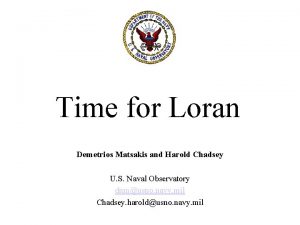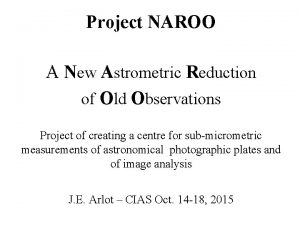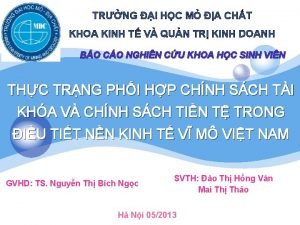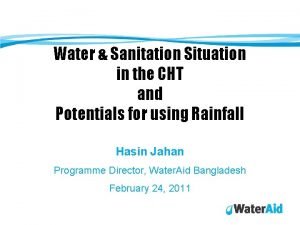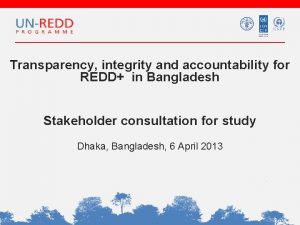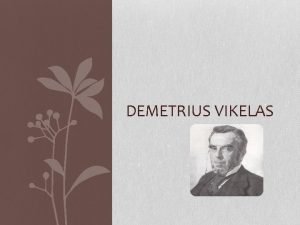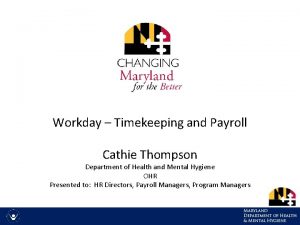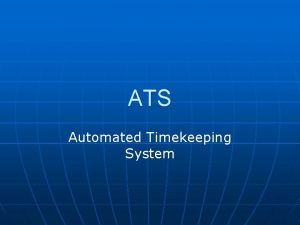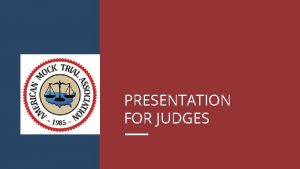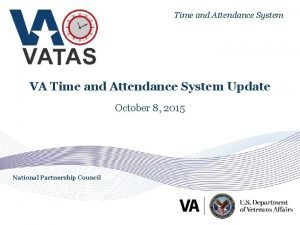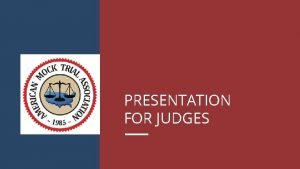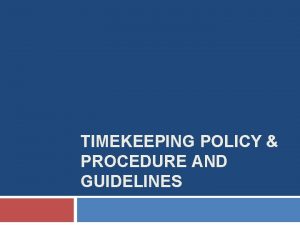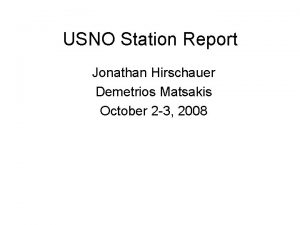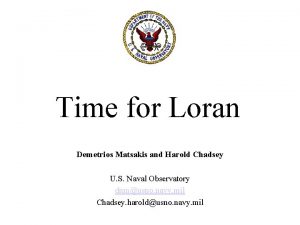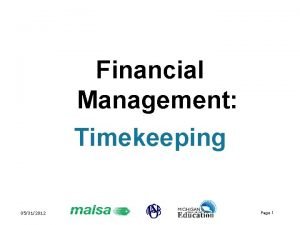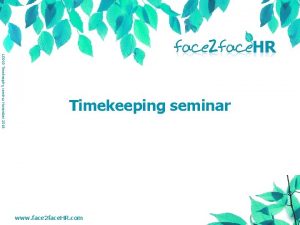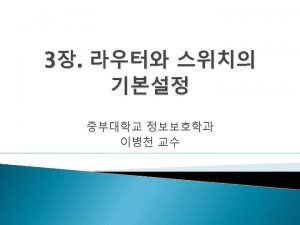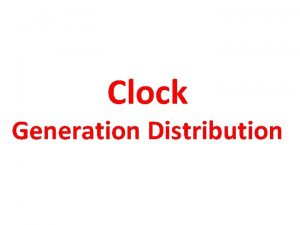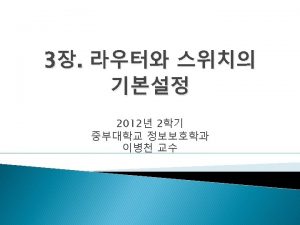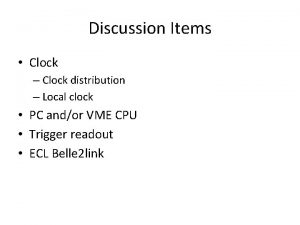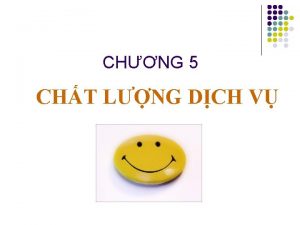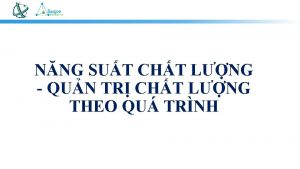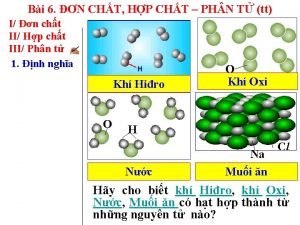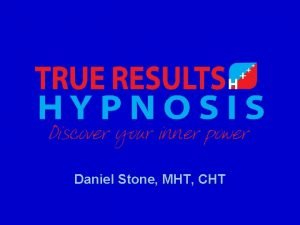CHT Clock Hardware for Timekeeping Demetrios Matsakis USNO






























- Slides: 30

CHT: Clock Hardware for Timekeeping Demetrios Matsakis (USNO) Lasers, Light, and Legacy August 1, 2015 Berkeley, CA

Clockmaking’s success had 100’s of fathers some called Plato, Galileo, Kelvin, Maxwell, Rabi and several were called Charlie 1. 1945 - Townes writes memo to Bell Labs on atomic clocks • refers to “everybody talking about it” 2. 1949 – NBS (NIST) builds ammonia-based clock • Townes is consultant 3. 1953 – Townes invents maser, with obvious timekeeping possibilities 4. 1955 – Louis Essen (NPL) builds practical cesium clock 5. 1974 – Vessot develops hydrogen-maser clocks 6. Today – Masers are the most precise clocks money can buy • USNO has 47 cavity-tuned maser clocks @ $250, 000 each • Frequency precisions ~ 10 -15

Plato’s Water-Powered Alarm Clock 3 Source: J. Barnett, Time’s Pendulum, Plenum Press

Source: John Vig 4

Hydrogen Maser Frequency Standard F. G. Major Springer, “The Quantum Beat”, 1998 5

Manipulating Atoms With Lasers • Laser in one dimension exerts a scattering force on atoms in the direction of the laser • Lasers in two dimensions, red detuned, exert a velocity-sensitive force on the atoms • Atoms can be brought to zero average velocity, with very little residual motion (i. e. cold) (Source: Tom Swanson, USNO ) 6

Sisyphus Effect Ref: Encyclopedia of Greek Mythology http: //www. mythweb. com/encyc/gallery/sisyphus_c. html

Potential Field of a Ground State Sublevel of an Atomic Ground State in an Optical Polarization Gradient 8 Ref: http: //www. physics. helsinki. fi/~jpiilo/coolpr. html

Potential Field of a Different Sublevel 9 Ref: http: //www. physics. helsinki. fi/~jpiilo/coolpr. html

The Cesium/Rubidium Fountain 10 Source: Chris Ekstrom

Promise of Optical Standards s = (Df /f)/(SNR)/Sqrt(t) Where s = frequency stability Df =width of Ramsey fringe f =frequency of the transition SNR = measurement Signal to Noise Ratio t = integration time

Ion Trapped In Quadrupole Force Field 12 Source: Dr. Demetrios Matsakis

Individual Ions in NIST’s Ion Trap (Gaps are position of different Hg isotope) 13

Feb 2015: Japanese achieve 2 10 -18 stability! (with strontium at “magic wavelength” of zero light shift) http: //phys. org/news/2015 -02 -centimeter-cryogenic-clocks-pave. html

Definitely 21 st Century: Optical Comb Translates Optical Frequencies to Microwave Clock Precisions => 10 -18 Ref: http: //www. mpq. mpg. de/~haensch/comb/research/combs. html 15

but in 2011 …

Backups

UTC Today Each month: 72 participants (April 2013) ~400 atomic clocks Ceasiums, Masers + 4 Rb Fountains BIPM Circular T Rapid UTC ~12 primary frequency standards ~250 time transfer files (mostly Cs fountains) daily, weekly, (monthly) § Monthly (post-processed) § Provides UTC through values of [UTC-UTC(k)] at 5 -day intervals § [UTC-UTC(k)] between 2 ns – some ms / uncertainty 5 ns – 20 ns § Weekly § Values of [UTCr-UTC(k)] at 1 -day intervals

Participating laboratories and their time transfer equipment (2013) Time Knows No Borders

Everyone Gets To Play

From Clock Labs to UTC: Time Transfer • Two-Way Satellite Time Transfer (TWSTT) • Utilizes geostationary satellite • Global Navigation Satellite Systems (GNSS) • • GPS GLONASS Galileo on the way More?

Clock Precisions Today (deviations from long-term model of rate, drift) Averaging Time Best Cesium Beam Best Masers Clocks “given their personalities” Rubidium Fountains 1 hour 500 ps 40 times better than cesium 25 times better than a Cesium 1 day 2. 5 ns 30 times better than a cesium 25 times better than a cesium 40 days 15 ns 3 times better than a cesium 25 times better than a cesium 80 days >25 ns Slightly better than a cesium >25 times better than a cesium

UTC/EAL’s Algorithm – Simple, robust clock model • Optimal for driftless clocks, white phase noise • Based on extrapolations/predictions of Clock-TT • TT = Terrestrial Time • TT = post-processed “UTC without leapseconds” – UTC set so average deviation of clocks from model is zero – Each clock weighted by monthly frequency stability • Very democratic – Not Narcissistic – Maximum weight ensures robustness » See Petit, Metrologia, 2003, 40 No 3 252 -256 – Algorithm has steady record of incremental improvements

The Quality of TAI/UTC Frequency stability ~3 x 10 -16 @ 40 d Frequency accuracy ~3 x 10 -16 § Clock frequency prediction § Clock weighting § § Frequency correction to match the SI second Based on PFS data Stability of EAL using the USNO Rb fountain as independent reference

Clock Making’s Exciting History

Time Transfer Noise’s Bleak Future Operational by 2020 Multiple & Redundant GNSS Fiber Optic ? VLBI ? ? Carrier Phase TWSTT ? ? ?

Prediction: the Bottom Line Will Get Lower

UTC in 2020 ü More and Better Clocks ü 1000 clocks from 100 nations ü More and Better Primary Frequency Standards ü Optical frequency standards in ~ 10 laboratories ü Improved Time Transfer ü Robust at 250 ps RMS ü Improved Algorithms for UTC ü Fully utilizing the complementary clock characteristics ü Daily delivery of UTC ü Improved real-time realizations of UTC by participating laboratories, UTC(k) as in UTC(USNO) and UTC(NPL) ü Precise steering of GNSS times to a representation of UTC ü UTC for User: Precise and Accurate to 500 ps RMS ü Rarely erroneous by > 1 ns

Primary frequency standards • Primary frequency standards – 13 in the last five years (KRISS, INRIM, LNESYRTE, NICT, NIST, NMIJ, NPL, PTB), 11 are Cs fountains

From microwaves to optical frequencies Microwave clocks (Cs fountains) realizing the SI second with uncertainty of order 10 -15 -1016 Optical clocks (neutral atoms, ions) representing the SI second with uncertainty of order 10 -17 - 10 -18
 Demetrios matsakis
Demetrios matsakis Usno
Usno Cht france
Cht france Logo cstt
Logo cstt Cht water
Cht water Redd cht
Redd cht Demetrius vikelas
Demetrius vikelas Fast clock to slow clock synchronization
Fast clock to slow clock synchronization 60 mins to seconds
60 mins to seconds Internal and external components of computer
Internal and external components of computer Workday timekeeping system
Workday timekeeping system Automated timekeeping system
Automated timekeeping system Electronic timekeeping
Electronic timekeeping Amta timekeeping
Amta timekeeping Vatas va
Vatas va Timekeeping ucsb
Timekeeping ucsb Amta timekeeping
Amta timekeeping Manusonic timekeeping
Manusonic timekeeping Timekeeping policy examples
Timekeeping policy examples Redogör för vad psykologi är
Redogör för vad psykologi är Mat för unga idrottare
Mat för unga idrottare Ramsa geometriska former
Ramsa geometriska former Claes martinsson
Claes martinsson Sjungen poesi
Sjungen poesi Etik och ledarskap etisk kod för chefer
Etik och ledarskap etisk kod för chefer Offentlig förvaltning
Offentlig förvaltning Vad kallas den mantel som bars av kvinnor i antikens rom
Vad kallas den mantel som bars av kvinnor i antikens rom Tidböcker
Tidböcker Steg för steg rita
Steg för steg rita Fspos vägledning för kontinuitetshantering
Fspos vägledning för kontinuitetshantering Orubbliga rättigheter
Orubbliga rättigheter
